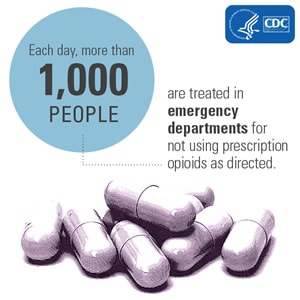
INDIAN RIVER COUNTY — Quick thinking and Narcan training helped two deputies save the life of a woman who was vomiting and had trouble breathing after she reportedly overdosed on an unknown amount of pills.
Those deputies were Deputy Dwayne Hoilett, 23, and Cpl Ryan Holly, 27.
“Having the Narcan at your disposal can save a life, and in this case, it did.” Hoilett said. “In the time we saved her by injecting her with Narcan to when emergency service officials got there, it all makes a difference. Literally it’s a game of seconds.”
Just having it, being trained in how to use it properly and when to use it.”
Narcan is a medication used to reverse the effects of opiates, especially in overdose cases, health officials said. An opiate is a drug containing opium or its elements that is used in medicine to bring sleep and relieve pain.
Deputies first began using Evzio auto injectors for Narcan in November 2017 in response to the continuing opioid crisis. All patrol deputies at the Sheriff’s Office were issued Narcan, sheriff’s spokesman Lt. Thom Raulen said.
The Sheriff’s Office provided a training class for using the injectors to the patrol deputies, said Cpl Ryan Holly. Statistics on how many local lives the device has saved since November were not immediately available.
Deputies said the latest near-death scare with the woman shows why having the medication is so important.
Note for videos: Click the audio icon in the lower right hand part of the screen for audio. If you don’t see the icon, try refreshing the page.
Deputy Dwayne Hoilett and Cpl Ryan Holly talk about using Narcan to save a woman who had reportedly overdosed at a friends home.
Posted by Nick Samuel on Tuesday, February 6, 2018
Deputy Dwayne Hoilett and Cpl Ryan Holly said the woman’s friend found her lying next to the bed in a room at her friend’s home. The bed’s cover was hanging off the woman, making it look as if she had fallen.
The friend called 911. Upon arrival, deputies saw that the woman’s face was blue, she was gasping for air and was unresponsive.
“We rolled her on her side so she wouldn’t suffocate on the vomit,” Holly said.
The 52-year-old woman had told her friend, a man, that she took an unknown amount of pills beforehand. The deputies arrived about 8 p.m. Sunday at the man’s home in the 1100 block of Old Dixie Highway.
Shortly after finding the unresponsive woman, Holly and Hoilett used an injector to insert .4 milligrams of Narcan into the woman’s right thigh.
“Walking in on that and seeing what was going on, you don’t really think about it,” said Hoilett. “You just listen to your supervisors, sergeants and corporals on scene, take the training and apply it. We’re just acting to save someone’s life.”
The injector, about the size of a cell phone, has a guard with a needle underneath it. Deputies removed the guard and inserted the needle in the woman’s leg for about five seconds.
Holly said it should take an estimated 30 minutes for Narcan to take effect.
Emergency medical service officials arrived about three minutes later and took the woman to the hospital, where she was last known to be in stable condition, deputies said. The amount of pills the woman took and what type were not available.
“Sometimes those who overdose might not want to admit what they have taken or witnesses might not say anything out of fear of getting in trouble,” Holly said. “Even having the small dose of .4 milligrams at our disposal is great and we can use it anytime we want.”
Hoilett was hired at the Sheriff’s Office while he was in the police academy in May 2017 and has been a patrol deputy for about two and a half months, Raulen said. Holly has worked at the Sheriff’s Office for a little over four years and has acted as a patrol deputy since his hiring.
National Statistics
Today, 40 percent of all U.S. opioid overdose deaths involve a prescription opioid, according to the Centers for Disease Control and Prevention. In 2016, more than 46 people died everyday from overdoses involving prescription opioids.
From 1999 to 2016, more than 200,000 people have died in the U.S. from overdose related to prescription opioids.
From the Centers for Disease Control and Prevention

PHOTO CONTRIBUTED BY THE CDC
The most common drugs involved in prescription opioid overdose deaths include:
- Methadone
- Oxycodone
- Hydrocodone
Among those who died from prescription opioid overdose between 1999 and 2014:
- Overdose rates were highest among people aged 25 to 54 years.
- Overdose rates were higher among non-Hispanic whites and American Indian or Alaskan Natives, compared to non-Hispanic blacks and Hispanics.
- Men were more likely to die from overdose, but the mortality gap between men and women is closing.
Overdose is not the only risk related to prescription opioids. Misuse, abuse, and opioid use disorder (addiction) also are potential dangers.
- In 2014, almost 2 million Americans abused or were dependent on prescription opioids.
- As many as one in four people who receive prescription opioids long term for non-cancer pain in primary care settings struggles with addiction.
- Every day, more than 1,000 people are treated in emergency departments for misusing prescription opioids.






